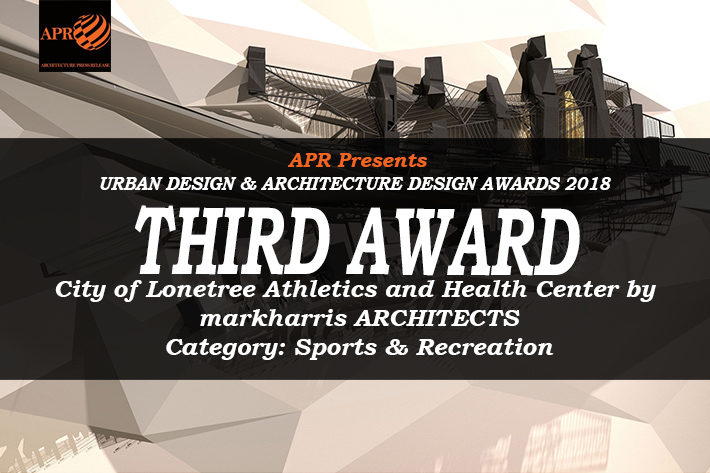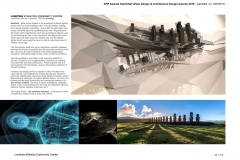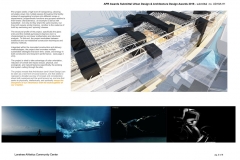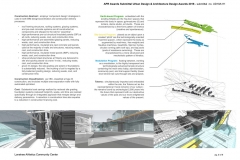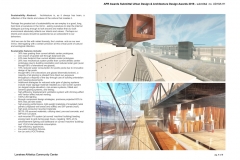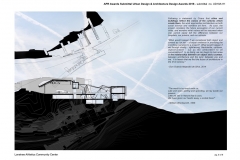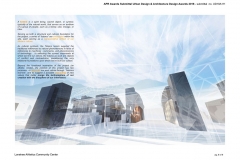Abstract: What would happen if we unearthed a Stealth fighter at the site of an ancient Mayan city? It would answer nothing, but it would question everything. As context for each other they would inherently become something quite new. Regardless of the power and magnificence each has as individual objects, and as confounding as their union may seem, the Mayan city could never again be seen as just an ancient city, and the Stealth fighter could never again be seen as just an advanced piece of military technology.
Urban Design & Architecture Design Awards 2018
Third Award | Category: Sports & Recreation
Architects: Mark Harris
Studio: markharris ARCHITECTS. PC
Team Members: Mark Harris, Sam Friesema, Ryan Ekstrom, Richard Mapes
Country: United States
Website: www.mharrisarchitects.com
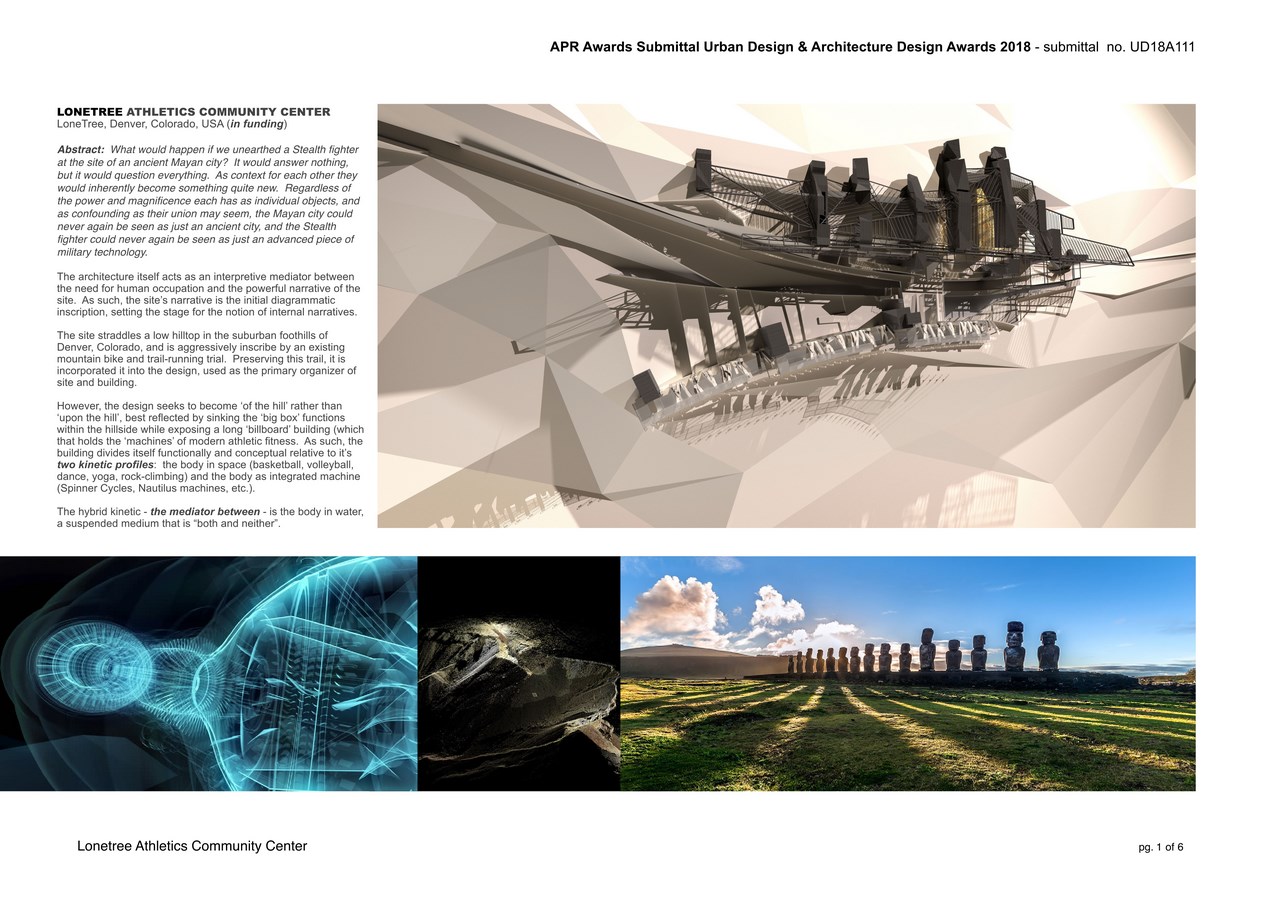
The architecture itself acts as an interpretive mediator between the need for human occupation and the powerful narrative of the site. As such, the site’s narrative is the initial diagrammatic inscription, setting the stage for the notion of internal narratives.
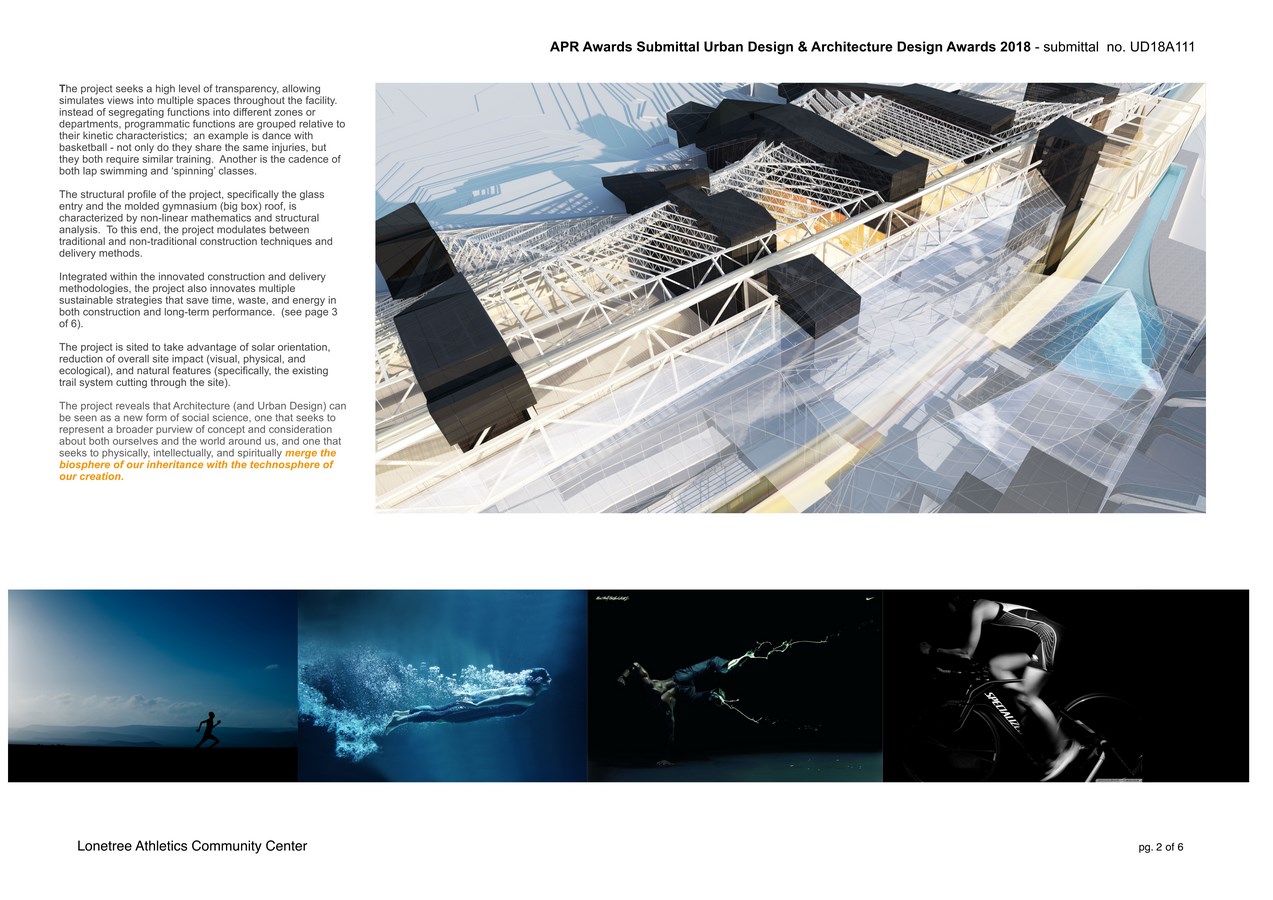
The site straddles a low hilltop in the suburban foothills of Denver, Colorado, and is aggressively inscribe by an existing mountain bike and trail-running trial. Preserving this trail, it is incorporated it into the
design, used as the primary organizer of site and building.
However, the design seeks to become ‘of the hill’ rather than ‘upon the hill’, best reflected by sinking the ‘big box’ functions within the hillside while exposing a long ‘billboard’ building (which that holds the ‘machines’ of modern athletic fitness. As such, the building divides itself functionally and conceptual relative to it’s two kinetic profiles: the body in space (basketball, volleyball, dance, yoga, rock-climbing) and the body as integrated machine (Spinner Cycles, Nautilus machines, etc.).
The hybrid kinetic – the mediator between – is the body in water, a suspended medium that is “both and neither”.
The project seeks a high level of transparency, allowing simulates views into multiple spaces throughout the facility. instead of segregating functions into different zones or departments, programmatic functions are grouped relative to their kinetic characteristics; an example is dance with basketball – not only do they share the same injuries, but they both require similar training. Another is the cadence of both lap swimming and ‘spinning’ classes.
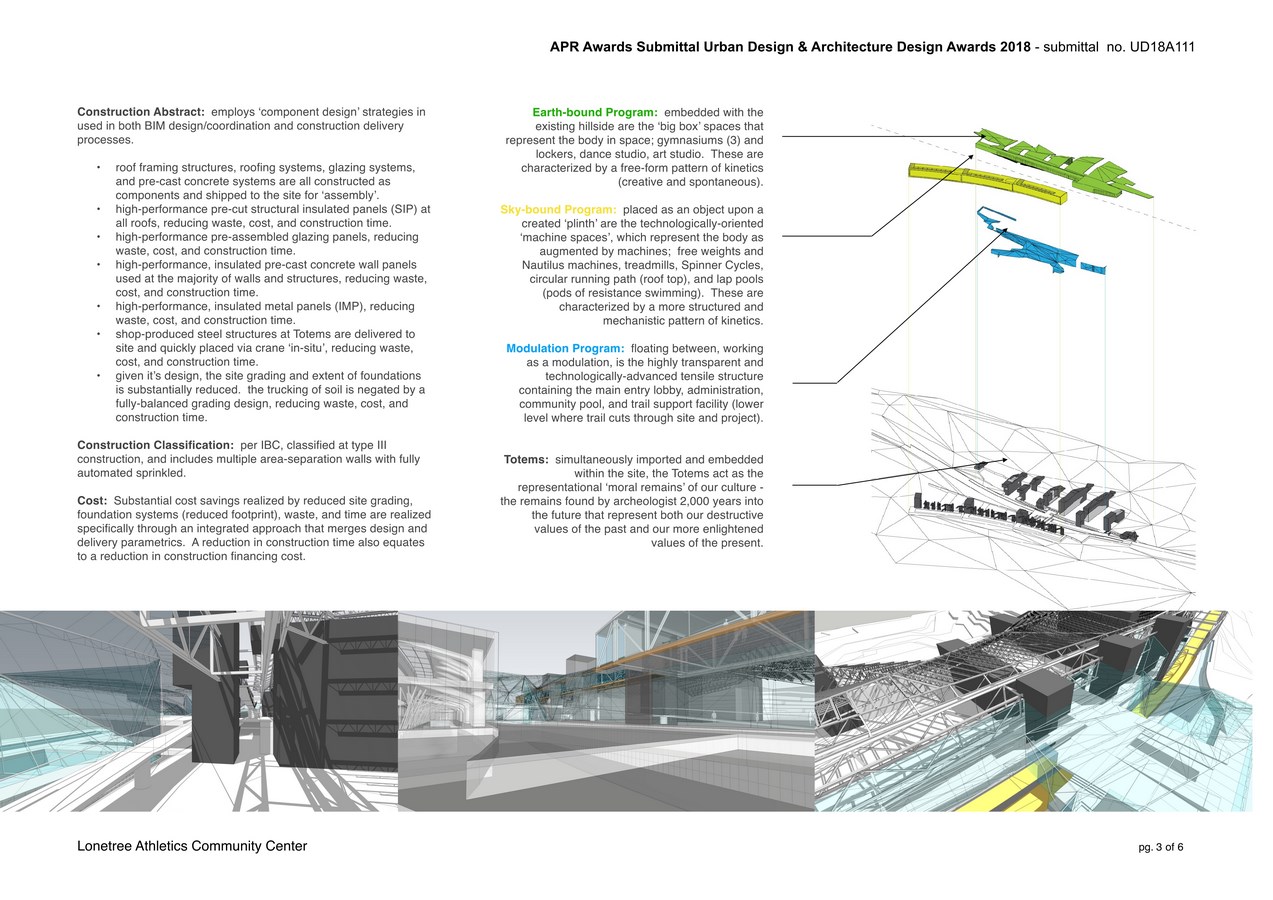
The structural profile of the project, specifically the glass entry and the molded gymnasium (big box) roof, is characterized by non-linear mathematics and structural analysis. To this end, the project modulates between traditional and non-traditional construction techniques and delivery methods.
Integrated within the innovated construction and delivery methodologies, the project also innovates multiple sustainable strategies that save time, waste, and energy in both construction and long-term performance. (see page 3 of 6).
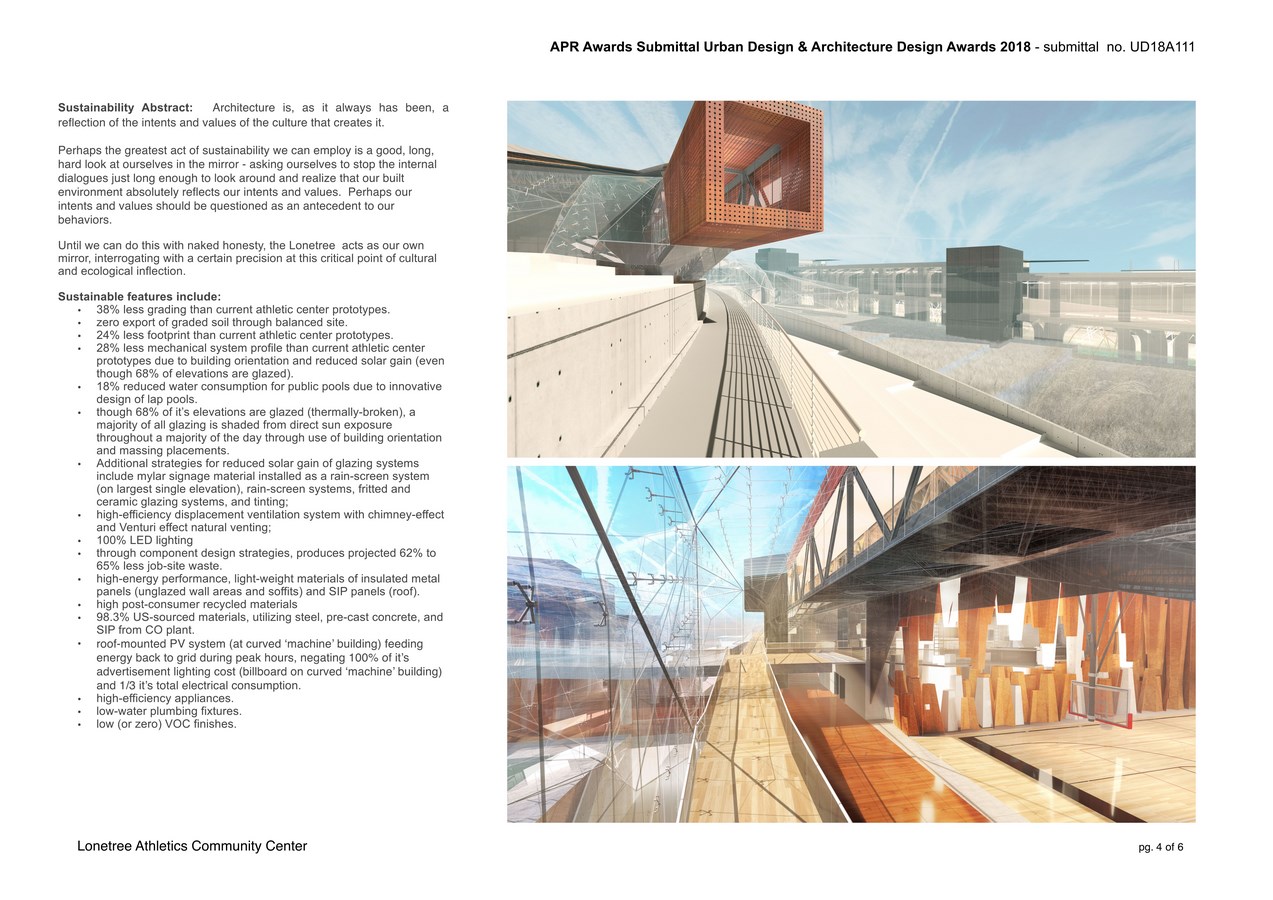
The project is sited to take advantage of solar orientation, reduction of overall site impact (visual, physical, and ecological), and natural features (specifically, the existing trail system cutting through the site).
Serving as both a structural and cultural foundation for the project, a series of “totems” are embedded within the site, each serving as a representative artifact of our Modern culture.
As cultural symbols, the Totems herein supplant the traditional references to natural phenomenons in favor of references to machines , commerce, and phenomenons of technology. In reflecting the current crossroads at which we find our selves, the totems as such are objects of conflict and contradiction, questioning the very relational foundations upon which we’ve built our culture.
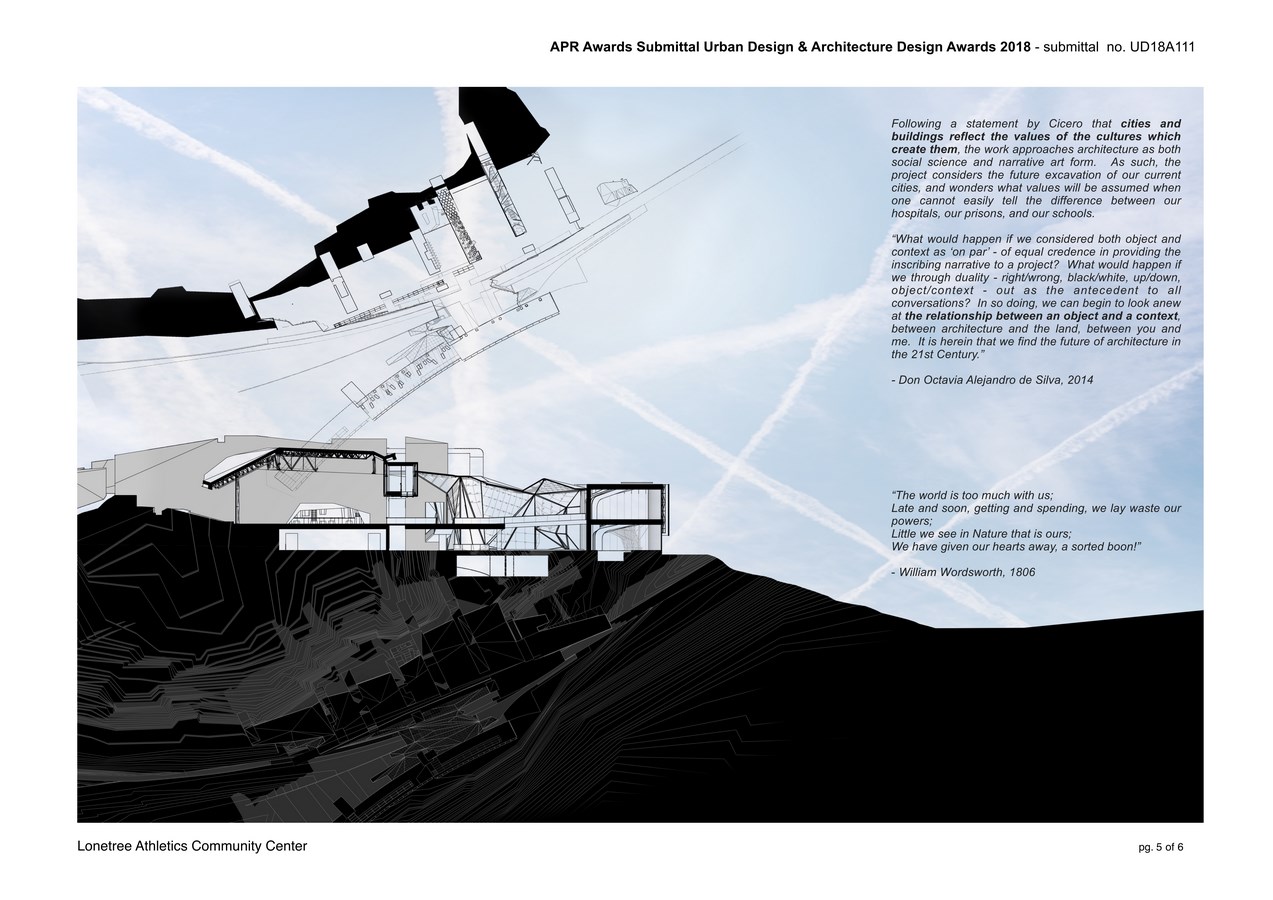
Beyond the functional imperative of the project (an athletic center), the polemic of this project has two
purposes: to (de)code our past values through “lessons learned”, and to suggest a possible (re)coding of new values that better merge the technosphere of our creation with the biosphere of our inheritance.
Construction Abstract: employs ‘component design’ strategies in used in both BIM design/coordination and construction delivery processes.
- roof framing structures, roofing systems, glazing systems, and pre-cast concrete systems are all constructed as components and shipped to the site for ‘assembly’.
- high-performance pre-cut structural insulated panels (SIP) at all roofs, reducing waste, cost, and construction time.
- high-performance pre-assembled glazing panels, reducing waste, cost, and construction time.
- high-performance, insulated pre-cast concrete wall panels used at the majority of walls and structures, reducing waste, cost, and construction time.
- high-performance, insulated metal panels (IMP), reducing waste, cost, and construction time.
- shop-produced steel structures at Totems are delivered to site and quickly placed via crane ‘in-situ’, reducing waste, cost, and construction time.
- given it’s design, the site grading and extent of foundations is substantially reduced. the trucking of soil is negated by a fully-balanced grading design, reducing waste, cost, and construction time.
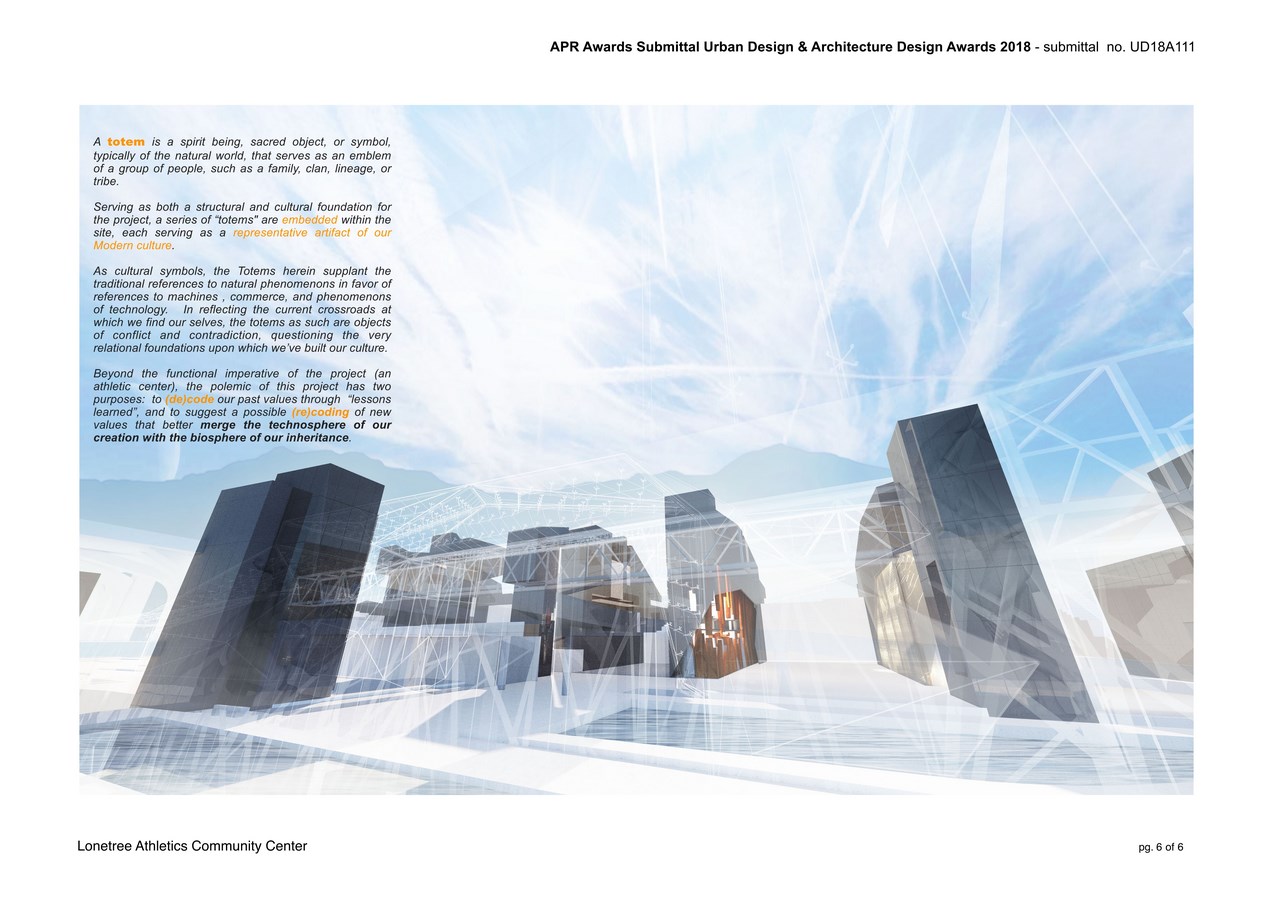
Construction Classification: per IBC, classified at type III construction, and includes multiple areaseparation walls with fully automated sprinkled.
Cost: Substantial cost savings realized by reduced site grading, foundation systems (reduced footprint), waste, and time are realized specifically through an integrated approach that merges design and delivery parametrics. A reduction in construction time also equates to a reduction in construction financing cost.


